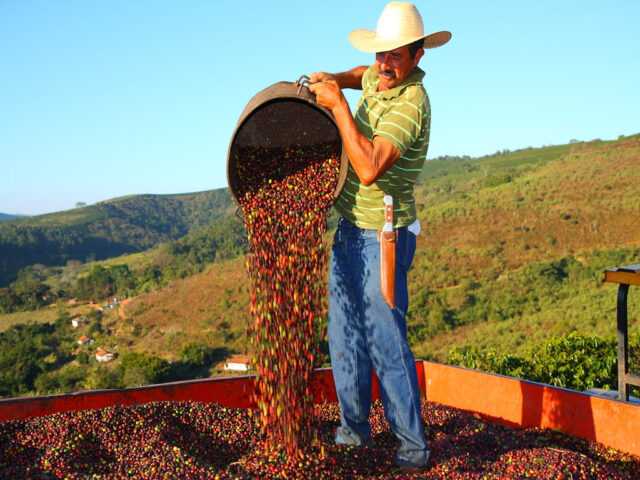SAO PAULO, Brazil – The year of 2020 registered high prices for both arábica and robusta coffee, states Cepea in its latest report. In the first semester of the year, values were underpinned by uncertainties regarding supply. In that period, besides the smaller arábica production in 2019/20, the covid-19 pandemic had brought concerns related to world logistics, and countries, such as Colombia, had problems with workforce for the harvest. As for demand, the scenario of uncertainties increased acquisitions for inventory building, favoring specially sales of robusta.
In the second semester, despite forecasts for a high 2020/21 production in Brazil (61.6 million bags, according to Conab – data from September/20 – or 67.9 million bags, as the USDA indicated in December/20) and concerns about consumption (due to the interruption of activities at bars, restaurants and coffee shops), prices in Brazil were underpinned by high dollar quotes and the still firm demand.
Unfavorable weather conditions (dry weather and high temperatures) up to mid-October and their possible negative effects on next season (2021/22) reinforced price rises, mainly for arabica.
Arabica Prices
The significant dry weather and high temperatures on coffee crops in September and October may result in a crop failure in 2021/22, which would be already smaller, due to the negative biennial cycle. This scenario and the fact that most part of the 2020/21 production had already been traded kept players away from trades in some periods.
Most of 2020, arábica prices were above 500 BRL/60-kilo bag, registering the highest levels in August, November and December. On August 31, the CEPEA/ESALQ Index for arabica coffee (delivered to São Paulo city) closed at 610.57 BRL/bag, the highest nominal level of Cepea series. In the partial of the 2020/21 season (from July/20 to December 23, 2020), the Index averaged 557.25 BRL/bag, 13.8% up (or 67.41 Reais per bag) compared to the same period in 2019/20.
Robusta
The effects of the weather were higher in Rondônia. In Espírito Santo, the biggest robusta-producing state in Brazil, players surveyed by Cepea say that rains in 2020 favored the development of crops, and a bigger production is expected in 2021/22. In the partial of the 2020/21 season, the CEPEA/ESALQ Index for the type 6, screen 13, Espírito Santo State, averaged 391.58 BRL/bag, for an increase of 26.4% (or 81.82 Reais per bag) compared to the same period last crop.


















